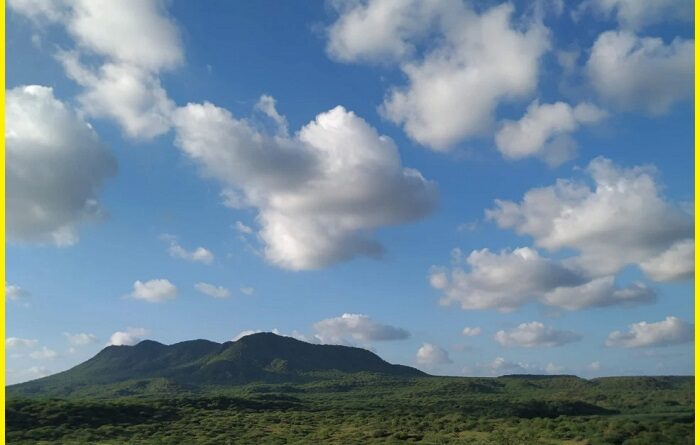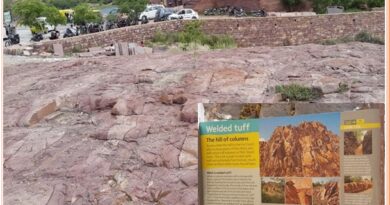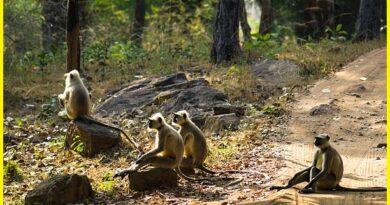Dhinodhar Hill-A Volcanic Plug in Sedimentary Terrain
Dhinodhar Hill
Dhinodhar Hill is a prominent hill located in the Kutch district of the western Indian state of Gujarat. It is situated near the village of Dhinodhar and is part of the Bhuj Hill range. The hill is known for its natural beauty and geological importance. Dhinodhar Hill is composed of sedimentary rocks that were formed over millions of years. It is home to several unique plant species and provides a habitat for a variety of wildlife. The hill is also a popular destination for rock climbers and trekkers.
In addition to its natural beauty, Dhinodhar Hill is also known for its cultural significance. It is home to several ancient Jain temples, including the 1008 Shri Parshwanath Jain Derasar and the Shri Ghantakarna Mahavir Jain Temple. These temples are important pilgrimage sites for Jains and attract visitors from all over India.
Overall, Dhinodhar Hill is a beautiful and culturally significant destination that offers visitors a unique opportunity to explore the natural and cultural heritage of the Kutch district.
Geology
Dhinodhar Hill, is a volcanic plug rising above the sandstone rock, and composed of relatively fresh, very fine-grained, aphanitic rock, rising to an elevation of 386 meters. It shows several near- vertical, dike-like tabular intrusions with well-developed columnar jointing, and a roughly circular ring breached to the east, enclosing a crater-like central depression. Dhinodhar is not a vent itself but the eroded remains of a subvolcanic intrusion emplaced at the time of the Deccan Traps.

Dhoramnath shrine
On the highest peak of Dhinodhar hill, there is a small, domed, somewhat cracked shrine of limestone and mud plastered with cement, built by Brahma-Kshatriya Shethh Sundarji Shivji in 1821. The shrine faces the east and has no doors. This shrine is sacred to the holy Dhoramnath or Dharmanath, who, after destroying Mandvi, standing on his head on lonely hill, to wash his sin. He chose another hill, but for it too the burden of guilt was too great and it became Jhurio, “broken down”. He chose a third hill, and climbing it backwards it bore him, and he called it Dhinodhar, “the patience bearer”.
Also read- Mandvi Beach- A Picturesque Sandy Beach in Kutch Gujarat
There are Spectacular views of the Great Rann and the Chhari Dhandh wetland from atop Dhinodhar. This area has abundant wildlife and flora and is a trekker destination. Every year since 2011, a trekking competition has been organized between December and January.
Chhari Dhandh
Chhari Dhandh is a seasonal wetland located in the Kutch district of Gujarat, India. It is situated near the town of Bhuj and is an important site for migratory birds, especially during the winter months. The wetland covers an area of around 80 square kilometers and is known for its rich biodiversity and unique ecosystem.
Chhari Dhandh is a shallow, ephemeral wetland that is filled with water during the monsoon season and dries up completely during the summer months. The wetland is surrounded by arid grasslands and scrub forests, which provide a habitat for a variety of wildlife species, including desert foxes, Indian wolves, and Indian gazelles.
Chhari Dhandh is also an important site for birdwatching, with over 200 species of birds having been recorded here. The wetland is particularly important for migratory birds, which arrive here in large numbers during the winter months. Some of the bird species that can be seen at Chhari Dhandh include the common crane, greater flamingo, and pied avocet.
How to Get Dhinodhar Hill
If you are traveling from Bhuj, the nearest major city, you can hire a taxi or take a bus to reach Dhinodhar. The hill is located about 50 km from Bhuj and the journey takes around 1-2 hours depending on the mode of transportation. Once you reach Dhinodhar, you can park your vehicle at the base of the hill and then climb up to the top on foot. The climb takes around 30-45 minutes and offers stunning views of the surrounding countryside.



